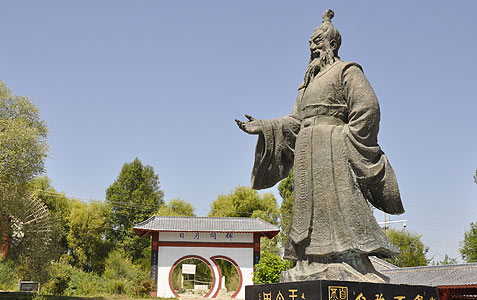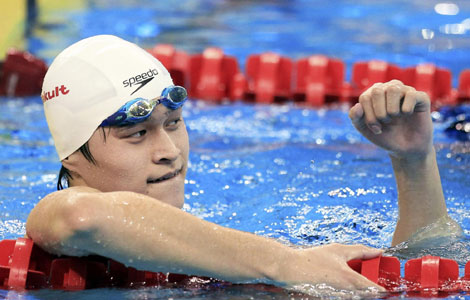Race is on for new generation of supercomputer
Updated: 2011-08-20 09:00
By Chen Jia (China Daily)
|
|||||||||||
BEIJING - Chinese scientists are charting a new roadmap for the country's independent research into building the fastest supercomputer in 2020.
"China is preparing to work on a supercomputer with a capacity of 100 petaflops by 2015 and try to produce the first exascale computer in 2020," said Hu Qingfeng, deputy chief designer of Tianhe-1A, one of the world's top 10 fastest supercomputers.
"We have kicked off the research of some core technologies and manpower cultivation for the plan," Hu, a professor at the National University of Defense Technology (NUDT), told China Daily.
Exascale computing is an attempt by scientists to take computing beyond the current petascale. If achieved, it will represent a thousandfold increase on that scale.
The challenges in core techniques include the performance of central processing unit (CPU), interconnection network, programming, energy management and system fault tolerance, he said.
Tianhe-1A was ranked No 1 in November last year by Top500, an organization that collates information on high-performance computing.
The capacity of Tianhe-1A is 2.57 petaflops, or 2.57 quadrillion calculations a second, which allows researchers to solve equations with far more variables, making results more accurate.
The challenges in developing supercomputers not only include technology breakthroughs, but also the promotion among users who usually prefer the old systems they are used to operating, said Lu Yutong, a professor at NUDT and a member of the Tianhe team.
"In a move to promote supercomputers' application among users, we need to better understand their practical demand," she said.
The application of Tianhe-1A has won positive feedback from about 100 users in fields such as seismic science, meteorology, medicine, commercial design, construction and manufacturing.
For example, Feoso Oil needs more than six months to get oil data analysis on a 10-square-kilometer piece of land with a depth of 5 km. However, after entering their equation into Tianhe-1A, the results come out in 16 hours, Hu said .
In 1978, then-Chinese leader Deng Xiaoping chose NUDT as one of the major institutions to develop China's own supercomputer. Five years later, the college produced its first supercomputer, Yinhe-I. It could perform 100 million calculations a second.
The next target for the Tianhe-1A team is to build a machine that can perform tens of petaflops per second, as well as developing new CPUs and graphics processing units (GPUs).
Although the supercomputer uses the 2048 FT-1000 CPUs developed by NUDT, it largely runs on the 14,336 CPUs made by Intel, the US chipmakers, and 7,186 GPUs from Nvidia, also based in the US.
Hot Topics
Anti-Gay, Giant Panda, Subway, High Speed Train, Coal Mine, High Temperature, Rainstorm, Sino-US, Oil Spill, Zhu Min
Editor's Picks

|

|

|

|

|

|







